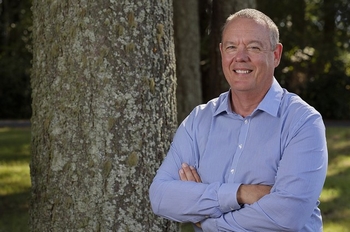CCC’s advice reinforces importance of forests and trees

The recently released draft advice from He Pou a Rangi – the Climate Change Commission is a very thoughtful piece of work. The draft advice raises some important issues for New Zealand and reinforces that forestry has a critical role in both reducing gross greenhouse gas emissions and in using indigenous trees to offset hard-to-reduce emissions.
Trees and forests cast in their supporting role provide a wonderfully flexible buffer for our climate response. If some areas of the economy decarbonise quicker than projected then less forests would need to be planted, but if rates of decarbonisation are slower than anticipated then more could be planted.
The Commission’s draft advice is visionary in its promotion of indigenous plantings or restoration for carbon storage. It’s said the best time to plant a tree is 30 years ago, the second-best time to plant is now!
The advice to plant indigenous species now so they can contribute to ongoing carbon storage from 2050 to help offset those emissions that can’t be avoided, such as nitrous oxide emissions from agriculture or residual industrial process emissions, is very exciting. This gets us a great head start. Plus gives us many extra environmental benefits in the meantime – from slope stabilisation and control of soil erosion to biodiversity enhancement.
The draft advice is understandably conservative and reliant on existing technologies to meet our targets, and it’s heartening to see the Commission project we can meet those targets without reliance on new or yet unproven technologies.
In Scion’s research area into the forest-based circular bioeconomy we see many opportunities for new low-carbon technologies where successful development will allow New Zealand to help accelerate the progress towards our emissions reduction targets. We are focussing on closing the waste loop, biofuels, bioplastics, novel biochemicals from trees and new timber technologies.
Moving away from the dichotomy of natural forests purely for conservation and exotics for timber production to a far more diverse approach to forests in New Zealand is a particularly exciting opportunity.
It’s important to recognise the concern in New Zealand about the need to decrease on-farm livestock emissions and fear about the impact of large-scale plantings on local communities.
Learning from international trends in pastoral systems, where trees, pasture and livestock are integrated, opens many avenues for new farm systems incorporating trees for more than just carbon sequestration. Riparian trees would be planted for stream water quality and ecological value, multi-tiered crops for animal welfare, trees for timber and new materials, niche high-value food crops or medicine, or high-value chemicals. The future farm could look very different to today’s while meeting climate, environmental, social and economic needs.
All these new technologies and a reimagining of trees and forests in the landscape gives us the opportunity for the development of small-scale distributed processing facilities in addition to large centralised wood processing plants. In other words, opportunities to take the processing to the trees.
Rapid advances in bioprocessing technologies is making this more and more feasible. Examples include solar-based small timber drying kilns, or bioenergy or biochemical digester plants. This ‘small is beautiful’ approach offers regional opportunities for new small businesses and enhanced employment opportunities.
So, the Climate Change Commission’s recommendation of ~700,000 hectares of new trees and forests could give benefits well beyond carbon sequestration and climate change mitigation and have a very significant positive impact on the environment and the wellbeing of regional communities.
If I welcome your thoughts on this vital topic and any other matter raised in this newsletter.

Dr Julian Elder
Chief Executive
For further information contact
Dr Julian Elder
